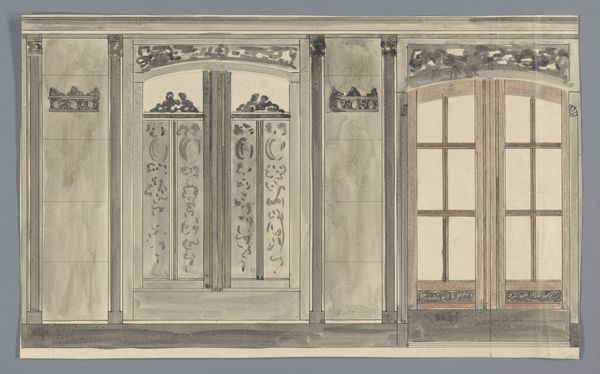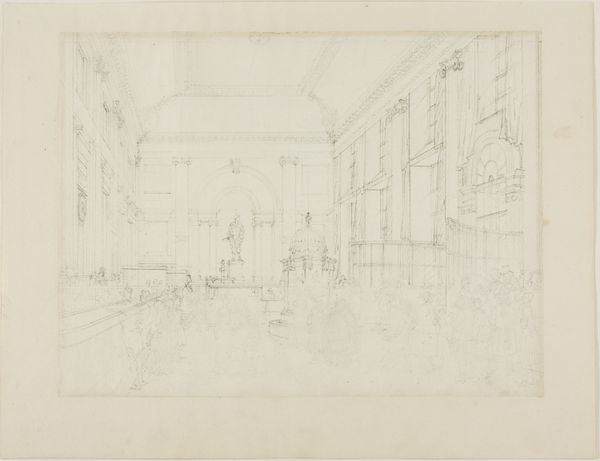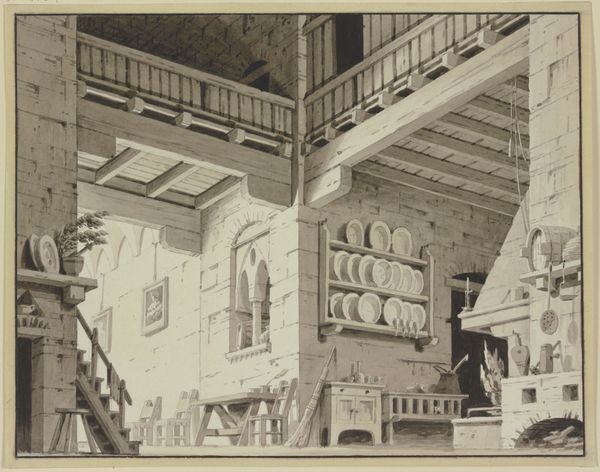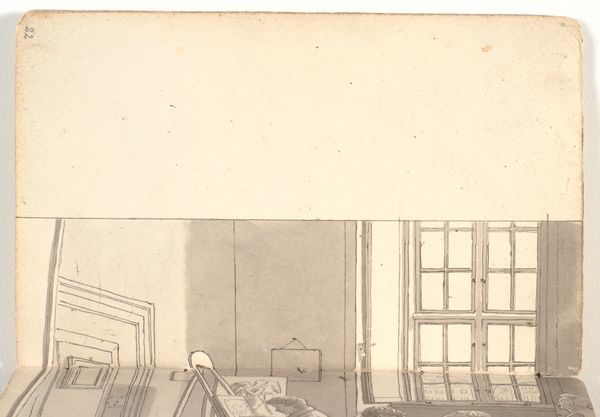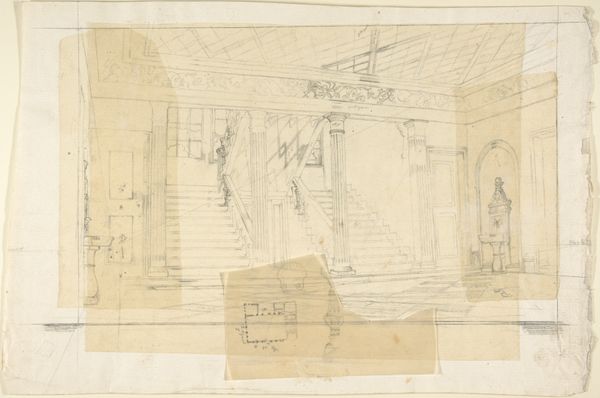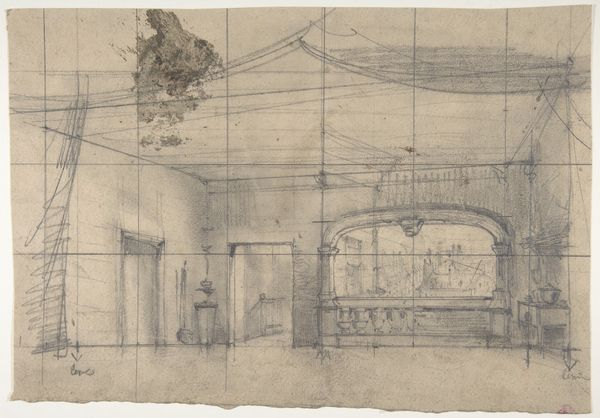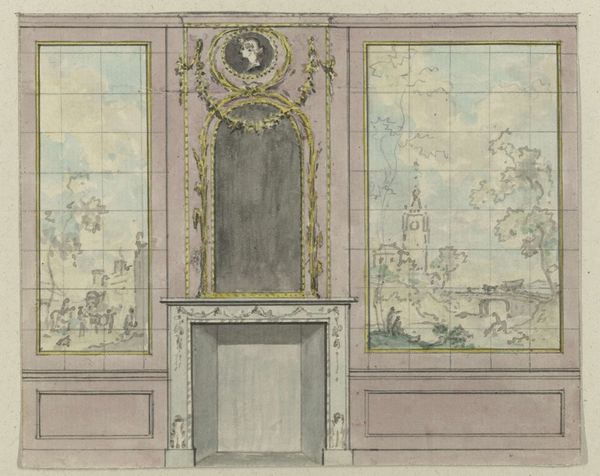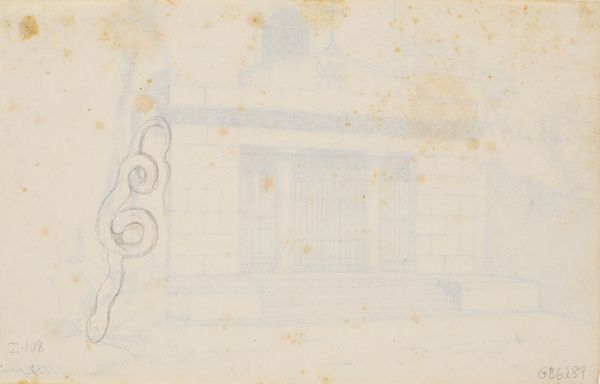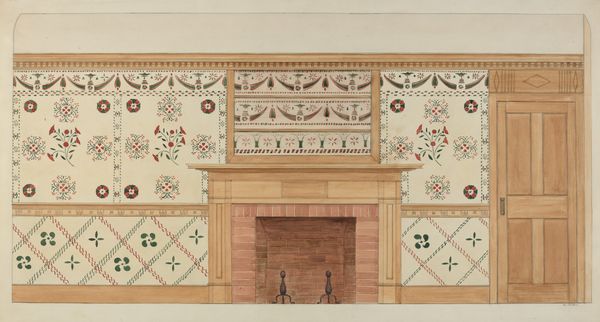
drawing, paper, ink, architecture
#
architectural sketch
#
drawing
#
paper
#
ink
#
geometric
#
architectural drawing
#
architecture drawing
#
cityscape
#
modernism
#
architecture
Dimensions: height 250 mm, width 322 mm
Copyright: Rijks Museum: Open Domain
Curator: Immediately striking, isn't it? The cool austerity... It reminds me of a stage set, all expectant geometry and poised emptiness. Editor: We're looking at “Ontwerp voor de eetzaal van de Mailboot,” a design drawing rendered in ink on paper by Carel Adolph Lion Cachet. While its dating is broad, spanning from 1874 to 1945, it offers a compelling glimpse into interior architecture of that era. What can you tell me about the work’s formal qualities? Curator: Note the strong horizontal lines. They visually flatten the composition, while the sparse furnishing enhances the linearity. What might feel rigid is softened by subtle tonal variations—the nuanced gradations within the grey washes—that give it atmosphere. Observe, too, the shallow depth of field, how it keeps our focus trained on the decorative carvings. Editor: Indeed. Thinking about the material considerations here, it’s interesting that Cachet uses a relatively modest medium like ink on paper to conceptualize such a potentially elaborate, built environment. The scale suggested in the sketch, combined with its envisioned grandeur implies substantial investment. Labor would've been key in materialising the space in the first place, so it raises questions about the relationship between artistic vision and construction logistics. Curator: Good point! Consider those elaborate carvings that stretch above the dining space. One can certainly find echoes of modernist tendencies within the larger cityscape motif—clean lines punctuated by historical motifs in bas relief. I read these figures as holding allegorical significance. They certainly break the sparseness with decorative effect. Editor: It prompts questions about class, doesn't it? Who are those that inhabit or make use of spaces such as this? How does Cachet's design aesthetic reflect, or perhaps shape, a social experience? And to that, what sort of labour conditions did workers endure to carve intricate ornamentation for these elite dining rooms aboard mail ships? Curator: An excellent provocation. Though appearing subdued at first glance, this drawing certainly ignites broader considerations of society, class, labor, and design itself. Editor: Precisely, moving past pure form we find, perhaps unexpectedly, the raw materials of historical investigation.
Comments
No comments
Be the first to comment and join the conversation on the ultimate creative platform.

